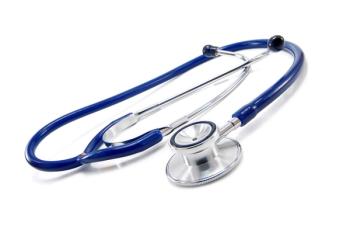
The Impacts of Extreme Heat on Mental Health
No doubt the climate is changing dramatically, and the evidence of profound heat waves and their impacts confront us in large and small ways on a regular basis.
Exclusive CLIMATE CHANGE coverage
It is hot out there! No doubt the climate is changing dramatically, and the evidence of profound heat waves and their impacts confront us in large and small ways on a regular basis. Record temperatures are reported year after year. 2016 set record high temperatures; then in 2017, despite La Niña’s cooling influence, temperatures nearly reached the 2016 records. 2018 was not much better, clocking in as the 4th hottest year globally with the US experiencing the hottest May in recorded history. Since the start of the 21st century, the annual global temperature record has been broken five times.1
The beginning of 2019 has begun with weather extremes wreaking havoc with a severe “polar vortex” in North America while Australia baked in blistering heat.2 With global warming, extreme heat is becoming the new normal.
Extreme heat makes most of us cranky, more likely to have temper flares and feel agitated or listless. Yet heat waves are not benign uncomfortable periods but have profound health risks with potential for death. Heat waves are now considered the deadliest weather events, exceeding hurricanes, lightning, tornadoes, floods, and earthquakes combined. The death toll in India, a country with extreme poverty, experienced the fifth deadliest heat wave in history in 2015. That heat wave claimed 2500 heat-related deaths. By comparison, in the US where access to air-conditioning is more readily available, the CDC reported that between 1999 and 2010 there were an average of 618 deaths annually due to extreme heat.3
Extreme heat can have significant effects on mental health and behavior. Given the predictable future of extreme heat waves potentially increasing the population exposure 4 to 6 times by mid-century, it is incumbent upon the psychiatric and mental health community to be knowledge- able about the specific impacts on behavior and psychiatric outcomes and to plan for ways to protect our patients and communities.4
Impacts of extreme heat on behavior and psychiatric conditions
Violence. Evidence linking extreme heat and aggression confirms the general understanding expressed in our colloquial language of “hot headed,” “so hot my blood boils.” One standard deviation of temperature increase leads to a 4% increase in interpersonal violence and 14% increase in group violence.5,6 This has significant implications for domestic violence and impacts on women and children. Burke and colleagues6 warn “Because locations throughout the inhabited world are expected to warm 2 to 4 degrees by 2050, amplified rates of human conflict could represent a large and critical impact of anthropogenic climate change.” Increases of 2 to 10 degrees due to “urban heat islands” caused by asphalt and concrete structures and limited green space compared to adjacent suburban and rural communities may be contributors to increased summer violence in inner cities.
Suicide-a form of violence turned on the self-is increased during extreme heat. Research shows an increase in suicide rates of 0.7% in the US and 2.1% in Mexico during periods of 1 degree Celsius increase over average monthly temperatures. Projecting future impacts of climate change and global warming assuming no reduction in green-house gas emissions, it is estimated that by 2050 there may be between 9000 to 40,000 additional suicides in the US and Mexico. These rates are comparable to the effects on suicide incidence due to economic recessions and unemployment and offset gains in suicide prevention programs and gun control policies.7,8
Mood. The same study on suicide in the US and Mexico also analyzed over 600 million social media communications and found an increase in depressive language and suicidal ideation correlated with increased temperatures-indicating a decrease in mental well-being.7 Meyer8 postulates a biological and physiologic mechanism for these behaviors and suggest that serotonin may play a role. This is an important area for further research.
Cognition. A variety of studies support the conclusion that heat impairs cognitive functions:
1) Harvard researchers followed 44 healthy students comparing cognition, focus, processing, reaction times, and memory during a 12-day heat wave. Results showed students who lived in air conditioned dormitories had significantly better function than an equally matched group of students who lived in non–air-conditioned dorms.9
2) Complex cognitive tasks such as working memory (spatial span test, pattern recognition) have been observed to be significantly impaired because of heat stress.10
Insomnia. Sleep is an essential function for overall well-being and health with adverse impacts of sleep deprivation on mood, depression, and cognition. Normal sleep onset and maintenance is triggered by a drop in core body temperature. Increased heat contributes to insomnia and worsens in combination with increased humidity, with the potential to aggravate all psychiatric difficulties and coping abilities.11 This has implications for urban residents who live in areas where heat is trapped and for people who do not have access to air-conditioning or cool respite places.
Especially vulnerable psychiatric patients
Patients with severe psychotic or mood disorders, substance abuse disorders, or cognitive impairments, who are able to compensate with marginal executive functioning during periods of normal weather, are challenged during intense heat and can lose their fragile ability to make plans, have good judgment, and effectively care for themselves. These patients are more likely to experience heat stroke and other heat-related morbidity. Evidence supports these impacts on psychiatric patients:
• Emergency department utilization and hospitalization increase for patients with preexisting psychiatric illness during heat waves12,13
• Preexisting mental illness alone raises the risk of mortality during extreme heat events 2- to 3-fold14,15
• Patients with schizophrenia may have underlying impairments in thermo-regulation (intrinsic to the disease), which might explain the perplexing sight of psychotic patients bundled up in layers on hot days16
• Psychiatric medications (eg, antipsychotics, anticholinergic antidepressants) have the potential to impair the body’s heat regulatory functioning; sweating and dehydration can increase lithium levels, putting patients at greater risk for dangerous toxicity during heat waves17
The negative effects of climate change are not equally distributed, and people with mental illness and substance abuse disorders are among the most vulnerable to the effects of extreme heat and other climate-change related events. Poverty, substandard housing, and lack of access to cool environments all contribute to this increased vulnerability. Homeless mentally ill patients have little control over their environments, limited ability to protect themselves from heat exposures, and therefore they are at extreme risk.
The most protective tool against heat stress/stroke is the availability of functioning air conditioners. Unfortunately, these kinds of cooling systems are out of reach for many people who live on the margins of society and need assistance in accessing public cooling respite centers.
As mental health care providers, we must do everything we can to protect our patients and our communities. Many communities have developed programs in partnership with public health, social services, and emergency response departments to respond and protect people from heat impacts. These entail public education campaigns as well as providing services and cooling centers. As mental health providers, we must educate both our patients and colleagues, and collaborate with leaders in the public health delivery systems to design preventive and intervention strategies to protect our vulnerable patients and communities from the adverse effects of extreme heat.
The CDC has many available resources including a brochure to guide program development and patient interventions (see Infographic).18 However, we cannot stop there. We must go further and use our professional voices to advocate for policies that get at the root causes of global warming.
References:
1. Lindsey R, Dahlman L. Climate Change: Global Temperature. Aug 1, 2018.
2. Extreme weather: Polar vortex in midwest, record heat in Australia, weird warmth in Alaska. What’s going on? USA Today, January 30, 2019.
3. Center for Disease Control and Prevention. Climate Change: Extreme Heat.
4. NCAR UCAR News. Exposure of US Population to Extreme Heat Could Quadruple by Mid-Century. May 18, 2015.
5. Hsiang S, Burke M, Miguel E. Quantifying the influence of climate on human conflict. Science. 2013;13;341:1235367.
6. Burke M, Hsiang SM, Miguel E. Climate and conflict. Ann Rev Econom. 2015; 7:577-817.
7. Burke M, Gonzalez, Baylis P, et al. Higher temperatures increase suicide rates in the United States and Mexico. Nature Climate Change. 2018;8:723-729.
8. Meyer R. Climate change may cause 26,000 more US suicides by 2050. The Atlantic. July 23, 2018.
9. Guillermo-Cedeño J, Williams A, Oulhote Y, et al Reduced cognitive function during a heat wave among residents of non-conditioned buildings: an observational study of young adults in the summer of 2016. Plos Medicine. July 2018.
10. Hancock PA, Vasmatzidiis I. Effects of heat stress on cognitive performance: the current state of knowledge. Int J Hyperthermia. 2003;19:355-372.
11. Obradovich N, Migliorini R, Mednick S, Fowler JH. Nightime temperature and human sleep loss in a changing climate. Science Adv. 2017. https://advances.sciencemag.org/content/3/5/e1601555. Accessed May 14, 2019.
12. Wang X, Lavigne E, Ouellette-Kuntz H, Chen BE. Acute impacts of extreme temperature exposure on emergency room admission related to mental and behavior disorders in Toronto, Canada. J Affect Disord. 2014;155:154-161.
13. Hansen A, Bi P, Nitschke M, et al. The Effect of Heat Waves on Mental Health in a Temperate Australian City. Environ Health Perspect. 2008;116:1369-1375.
14. Bark N. Deaths of psychiatric patients during heat waves. Psychiatr Serv. 1998;8:1088-1090.
15. Bouchama A, Dehbi M, Mohamed G, et al. Prognostic factors in heat wave related deaths: a meta-analysis. Arch Intern Med. 2007;167:2170-2176.
16. Chong TW, Castle DJ. Layer upon layer: thermoregulation in schizophrenia. Schizophr Res. 2004:69:149-157.
17. Martin-Latry K, Goumy MP, Latry P, et al. Psychotropic drugs use and risk of heat-related hospitalization. Eur Psychiatry. 2007;22:335-338.
18. Centers for Disease Control and Prevention. Climate Change and Extreme Heat Events.
Newsletter
Receive trusted psychiatric news, expert analysis, and clinical insights — subscribe today to support your practice and your patients.














